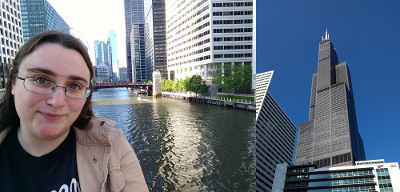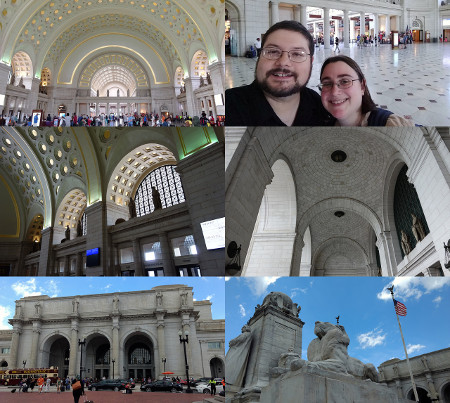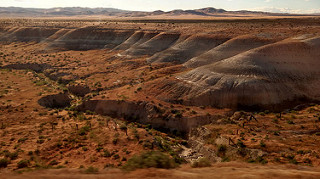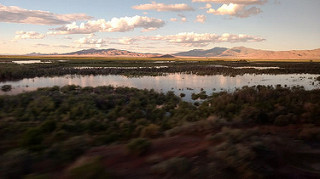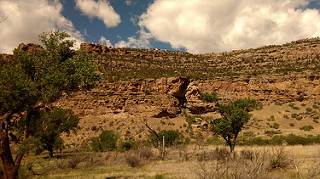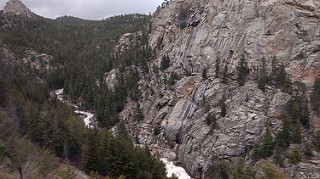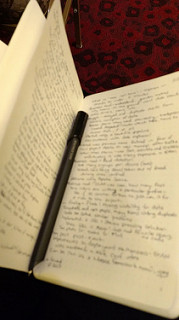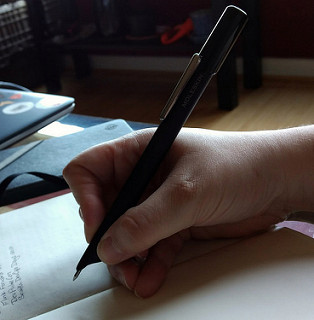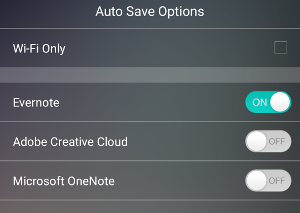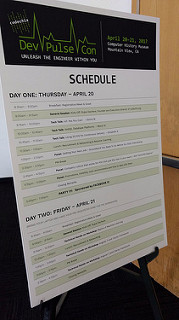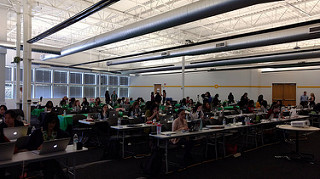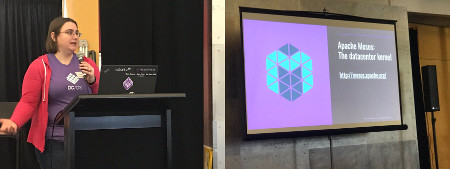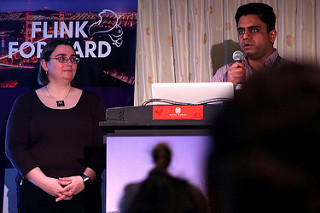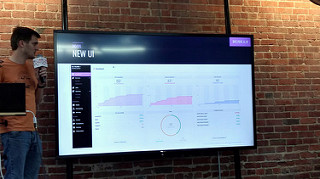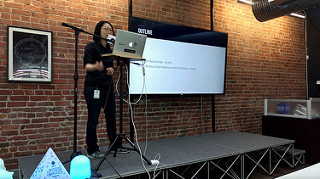Continuing on from my last post, our cross-country journey continued as we entered Iowa on Sunday morning. After a day of no proper meals due to not feeling well, I’m happy to say that I managed to consume about half my breakfast of eggs, potatoes and a biscuit.
As this second bit of the ride on the California Zephyr took us into the midwest the scenery did calm down from the breathtaking views in California and Colorado. Still, it was incredibly green and there were some lovely hills here and there. We also saw a fair number of horses and cows, along with fields that I expect would be growing a whole bunch of our food later in the season.
Leaving Iowa, we crossed the Mississippi River into Illinois. I’d seen the Mississippi River on trips to New Orleans and St. Louis, but this was the first land crossing I’d done, and the furthest north. Even up there it’s quite a river.
The ride through Illinois went smoothly, we saw several wind farms and we had a nice fresh air break in Galesburg. We soon left the countryside farms of western and central Illinois and made our way to the final destination of this train: Chicago.
I’ve been through the Chicago airport several times, and spoke at a conference south of there in Urbana-Champaign, but I’d never properly been to Chicago. In spite of not quite feeling 100%, we did have just over three hours before we had to catch our next train and I made a point to venture outside of Union Station. But first I beheld Union Station itself, it was a nice place and we were able to spend the rest of our time in the Amtrak lounge there.
I took a walk around Union Station and then walked across a small river to get over to where Willis (formerlly Sears) Tower is for some pictures. The fresh air was nice, but it was getting a bit warm outside on this side of the Mississippi! After all those mountains and glimpses of snow, I was suddenly reminded that it was the end of May.
Our next train boarded just before 7PM and whisked us off to Washington DC. This time we were on the Capitol Limited, and to mix things up we decided to go with a Roomette rather than the Bedroom on this segment. I probably wouldn’t do it again unless traveling solo. The privacy of our own sleeper space was nice, but we’re not small people and it was pretty tight quarters for the two of us. The top bunk, where I slept, was a bit smaller than in the bedroom and I was extra thankful for the don’t-fall-out net at the edge of my bed. It was only for a night and a half day though, and we weren’t tired of each other’s company, so it worked out fine.
We had dinner shortly after boarding, we were a bit disappointed to learn had the same dining car menu as the California Zephyr. Still, the steak was good, even if I could only finish half of it. It was also enjoyable watching the sun set as we rode through South Bend, Indiana.
I didn’t sleep exceptionally well on that leg of the journey. We had a stop in Toledo, Ohio in the middle of the night that I was inexplicably awake for. I then woke up around 6AM in time to wander around the platform for a few minutes during our stop in Pittsburgh. I think this journey was a bit bumpier than much of the journey on the Zephyr and it was delayed by about an hour due to freight congestion in the corridor.
As Monday morning came into focus, I’m delighted to report that I finished my entire breakfast, though I did skip anything resembling cheese or a buttery biscuit, going instead with plain scrambled eggs and potatoes.
We made our way through more of western Pennsylvania, into Maryland and then West Virgina. It was a lot of familiar views, green forests and fields. I’d vacationed in West Virginia before, but we hugged the Maryland border in the flat areas, so there wasn’t much to see until we got to Harpers Ferry, which is incredibly charming.
Our final stop was Washington DC! We had once again taken the entire Amtrak line. The station in DC was probably the most amazing of the trip. It’s huge and beautiful, and included an large food court with beautiful stairways taking you between floors. I was finally feeling well enough to have a more normal meal, so I got a beef salami and cheese crepe in the food court along with a bottle of water. The tucked away Amtrak lounge wasn’t nearly as nice as the new one in Chicago, so I spent most of my time wandering around the station taking pictures, and a few minutes outside to see the Capitol Building and get some pictures of the station from the outside. It was definitely May weather out there, my jacket was too much and I retreated back to the air conditioned station pretty quickly.
The final leg of our Amtrak adventure took us on the Northeast Regional. Sleeper cars behind us, we had regular business class seats on this train for the quick two hour, largely urban trip from Washington DC to Baltimore and Wilmington to finally Philadelphia!
We departed the train at the familiar 30th Street Station in Philadelphia. We had just over an hour there, taking time to relax for a bit before taking one final train, this time on the local Philadelphia transit, SEPTA regional rail. My father in law graciously picked us up at the station in Trevose just after 7PM and deposited us at the townhouse, just over a mile from the station.
And there we were! Coast to coast on trains. Would we do it again? Absolutely. It was expensive and time-consuming, but I love trains and the chance to fully disconnect, catch up on reading, and see the country is worth it from time to time. We weren’t overly social on the train, but chats during meals with fellow travelers were always nice, learning about them and their reasons for taking the train (usually either for the experience like us, or because flying was too stressful or too much of a hassle). Even before we were off the train I was thinking about the next one I want to take. The 46 hour Empire Builder that travels north of our route, from Portland to Chicago? Or perhaps a more southernly route on the 40 hour Southwest Chief between Los Angeles and Chicago, or between the same two cities but taking 65 hours to traverse Texas on Texas Eagle? I’ll definitely be looking for an opportunity to take the Coast Starlight up the California coast. So many great choices.
More photos (almost 450 of them!) from our journey are in an album here: https://www.flickr.com/photos/pleia2/sets/72157684493832435/






